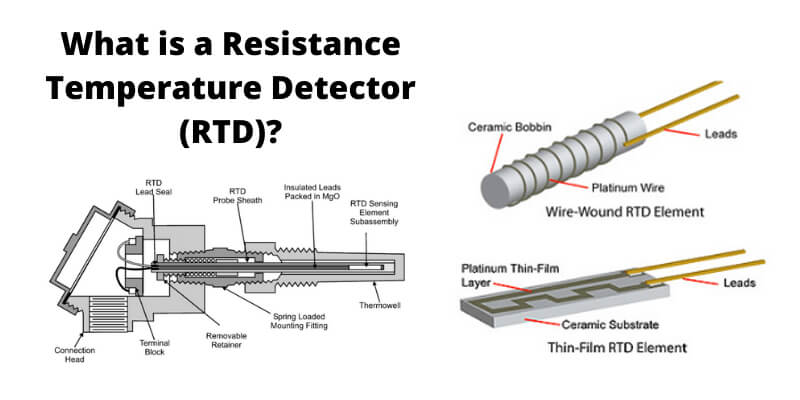
Introduction
This article contains everything you need to know about RTD sensors.
You will learn more about topics such as:
What is an RTD sensor?
Types of RTD sensor elements
How an RTD sensor works
Types of RTD sensors
And much more…
Chapter One What is a RTD Sensor?
An RTD, resistance temperature detector, is a passive temperature sensing device that operates on the principle that the resistance of a metal changes as the temperature changes. The electrical current that passes through the element or resistor of the sensor creates a resistance value that is measured by an attached instrument that correlates it to the temperature based on the resistance characteristics of the RTD sensor.
As the temperature of a metal rises, the metal‘s resistance to the flow of electricity increases. RTD sensors measure the temperature of materials that have a predictable change in resistance as the temperature of the material changes. The use of RTD sensors is due to their accuracy, repeatability, and stability.
Chapter Two: Types of RTD Sensor Elements
There are a wide variety of element types used to manufacture RTD sensors. Each of the various types conform to different standards, measure different temperature ranges, come in an assortment of sizes, and have differing standards for accuracy. Their basic function of measuring temperature by resistance is the same with each type having a pre-specified resistance value for their specific range of temperatures.
Resistance elements are the central part of an RTD and are to°ragile and sensitive to be used in their raw form, which means they must be protected and shielded. The readings of an RTD are measured in Ohms (Ω), an electrical unit for measuring resistance.
The various metals used as resistance elements have a resistance measurement for different temperature ranges.
Types of RTD Sensor Elements
The element of an RTD sensor is the sensing component that changes in resistance when there is a change in temperature. The most common element is platinum. Other element metals are copper, nickel, tungsten, Balco, and iridium.
Platinum
Platinum sensor elements are made of pure platinum wire and have a positive temperature coefficient. The linear and long term stability of platinum RTD elements make them an extremely accurate sensor for industrial applications. Platinum RTD elements can use copper wire extension leads and are suited for industrial applications that have a wide temperature range that requires stability and linearity.
Nickel
Nickel elements have a limited temperature range due to the amount of resistance per degree of temperature change and become non-linear over 300° or 572°. They have good corrosion resistance and are less expensive than platinum RTDs but age rapidly and lose their accuracy. Their temperature range is 80° to 260°C or – 112° to 500°.
Copper
Copper has good linear resistance in relation to temperature change but needs a longer element than platinum because of its low resistivity forces. The fact that copper oxidizes limits its use to temperatures under 150° or 302°. The uses of copper RTDs are limited to winding measurements for motors, generators, and turbines. Though copper elements have excellent linearity, they are less expensive than other types of RTDs. Applications that are free of oxidizing atmospheres use copper elements because of their linearity and low cost.
Balco
Sensors made of Balco are an annealed resistance alloy of 70% nickel and 30% iron. A Balco 500 ohm sensor provides a relative linear resistance at temperatures between -40° to 116° or -40° to 240°. Balco has the same thermal conductivity as nickel but with twice the resistivity. Much like copper, Balco RTD sensors are low cost with a high resistance coefficient and exceptional linearity as well as strong mechanical properties and some corrosion resistance.
Tungsten
The main characteristic of tungsten is its high resistivity, which makes it ideal for high-temperature applications. The difficulty with tungsten is that it’s brittle and difficult to work and shape.
Other Metals
All metals produce a positive change in resistance for a positive change in temperature. Though this is true, certain metals have a better resistivity than others, which makes them better for RTD sensor use. Two metals that are seldom used for RTD sensors are gold and silver since they have a low resistivity factor.
When examining a metal for use in an RTD, the most important factor is its purity, since the purity of a metal strongly influences its resistivity. To specify and determine elements for use in an RTD, their resistance in ohms (Ω) is measured at zero degrees Celsius; this should result in 100 Ω of resistance.












